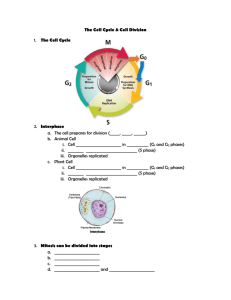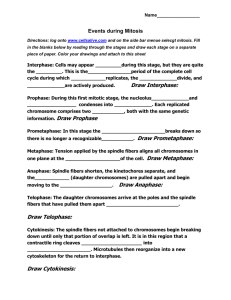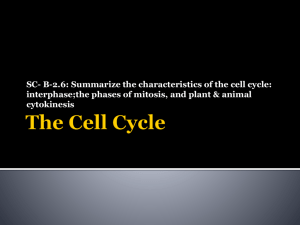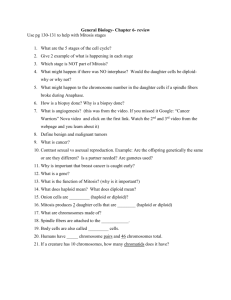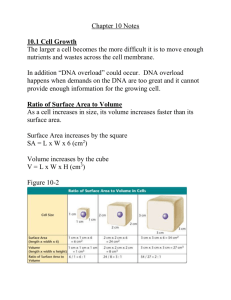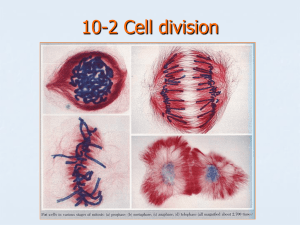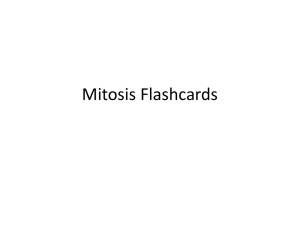Cell Division
advertisement
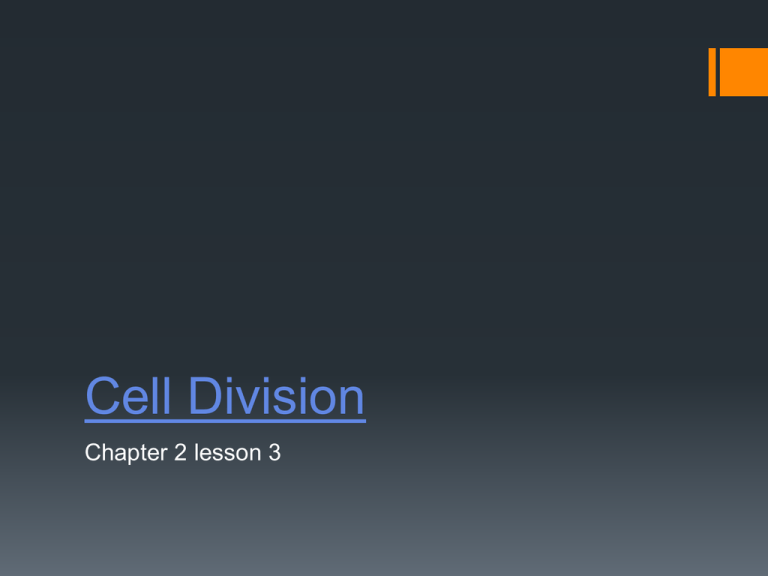
Cell Division Chapter 2 lesson 3 Objective: Understanding the functions of cell division Why do cells divide? Growth of an organism Repairing damaged structures ex. If you skin your knee Reproduction- especially for single celled organisms such as amoebas The Cell Cycle Occurs in three stages Involves cell growth, preparing for division, and then division into two new cells The two new cells are called daughter cells Each daughter cell then begins the cell cycle again Three main stages: Interphase, Mitosis, Cytokinesis Stage one: Interphase The cell grows to full size and produces the organelles it needs The cell then makes an exact copy of DNA in the nucleus. This is called replication DNA gets packaged into chromosomes Each cell created will contain an identical sets of chromosomes Cells produce structures that will help with cell division Stage 2: Mitosis The cell nuclei divides into two new nuclei and one set of DNA goes to the daughter cells Four stages Prophase- nuclear envelope breaks down, spindle fibers form and connect at opposite sides, chromosomes condense. Metaphase-chromosomes, attached to spindle fibers, line up in the center of the cell Anaphase- chromatids split and move to opposite sides of the cell Telophase- spindle fibers disappear, nuclei are forming, cell is pinched in the middle Stage three: Cytokinesis Completes process of cell division Each Daughter cell has the same number of chromosomes and is an exact copy of the parent cell Animal Cells- the cell membrane squeezes together around the middle of the cell Plant Cells- cell plates form across the middle of the cell, new cell walls develop
